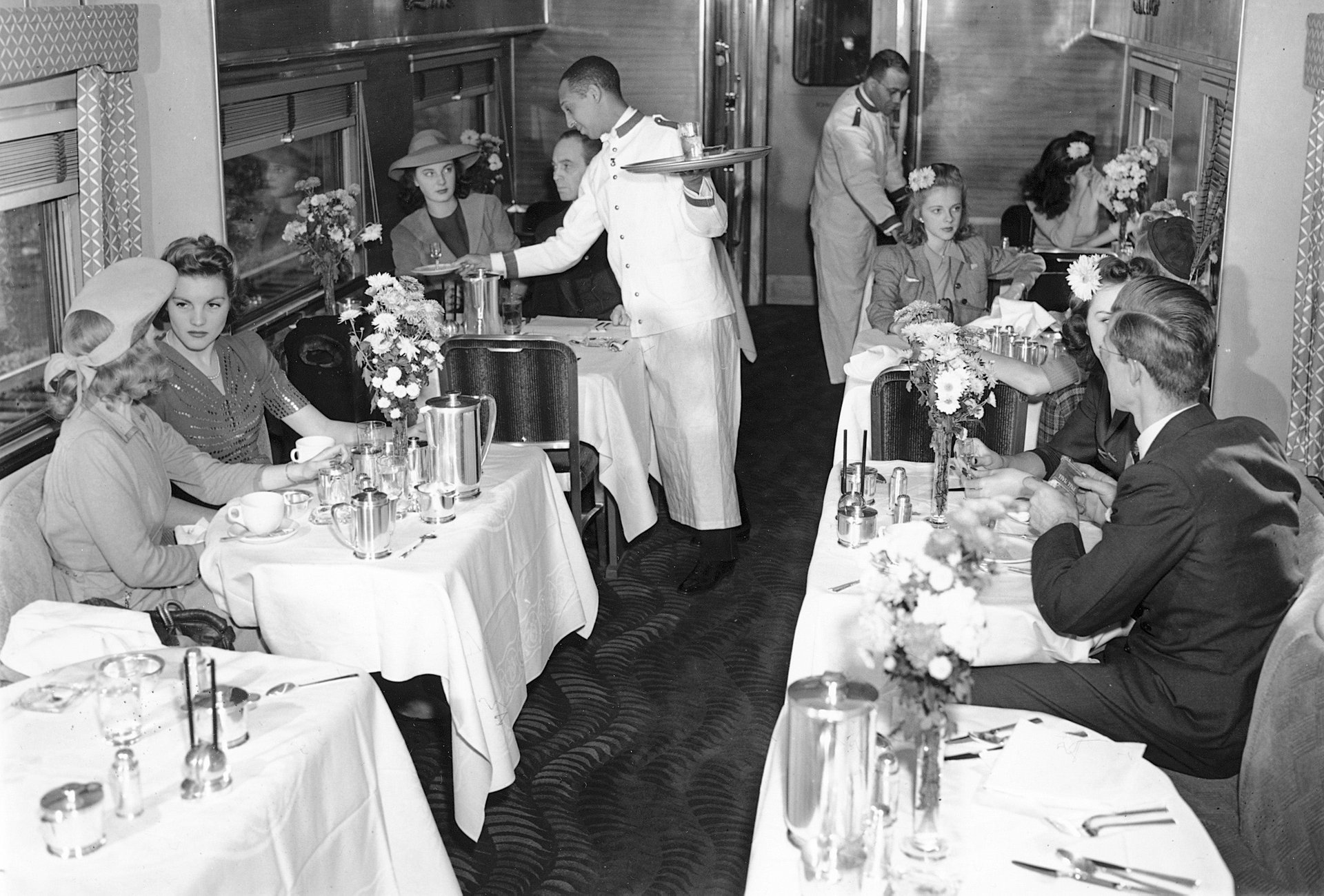An Austrian Twitter account chronicles the best food on trains
In most English-speaking countries, the train dining car is endangered and arguably extinct. Once the very bastion of luxury travel—delicious food, served against a backdrop of the rushing countryside—these formerly great institutions are mostly replaced by sad sandwich stalls or beleaguered train employees pushing trolleys of potato chips, chocolate bars, and insipid cups of tea and coffee. In 1997, the UK had 250. Now, you can count the British examples on one hand.


In most English-speaking countries, the train dining car is endangered and arguably extinct. Once the very bastion of luxury travel—delicious food, served against a backdrop of the rushing countryside—these formerly great institutions are mostly replaced by sad sandwich stalls or beleaguered train employees pushing trolleys of potato chips, chocolate bars, and insipid cups of tea and coffee. In 1997, the UK had 250. Now, you can count the British examples on one hand.
Not so, however, on the European continent. There, travelers are able to put the wisdom of American travel writer Paul Theroux to the test. In his 1979 book The Old Patagonian Express, Theroux explains his theory on countries and their trains: the latter “accurately represents the culture” of the former. “The seedy distressed country has seedy distressed railway trains, the proud efficient nation is similarly reflected in its rolling stock,” he writes. “Dining cars, I found, told the whole story (and if there were no dining cars the country was beneath consideration).”
The Twitter account Dining Car is here to help. A self-described compendium of “pictures and stories from dining cars,” the account diligently tweets and retweets images and experiences from dining cars around the world. David, the account holder, has a separate Flickr, and a Patreon page where fans can support his efforts to travel by train. “The idea behind it is to first and foremost promote traveling by train (over plane),” he explains. “Dining cars are a wonderful and often hidden secret to a more joyful way to travel by train.”
Many of the spoils come from Eastern Europe, and tend to run toward the heavy: beer, schnitzel, sausages. It’s rustic fare, designed to nourish starveling travelers or folks with a long way to go. Desserts come with spirals of whipped cream, a fan of tinned fruit segments, and sometimes a sprig of mint. Meat is often breaded, and then fried, for good measure.
The growing interest in David’s project may reflect the continent’s shifting attitude toward train travel. The “flygskam” movement encourages customers to eschew flight in favor of more environmentally friendly overground options. The Swedish national rail company last year reported record numbers of passengers, with Swedes in particular taking the plunge to be more responsible with their travel.
It speaks, too, to a trend of trains being seen as a more luxurious alternative. Often more expensive than flying, both in terms of cash and time, passengers are now looking to capitalize on the romance and relative comfort of rail over a sardine tin in the sky. In the past couple of years, train companies have taken note, launching luxury sleeper options between Scotland and London and through the Canadian Rockies. A few more, then, for David’s list.